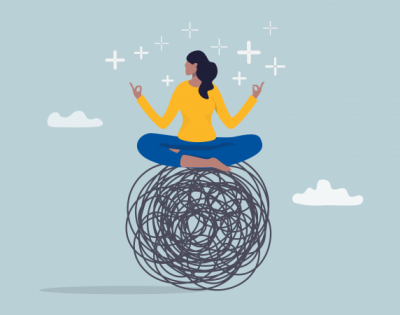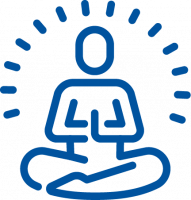
Many people are affected by trauma at some point in their life. Symptoms of trauma can include anxiety, confusion, agitation, dissociation, and more. Luckily, there are treatments for issues caused by trauma. There are also many ways to alleviate symptoms. Yoga and trauma-sensitive meditation can help calm and ease anxieties that result from traumatic experiences.
Trauma-Sensitive Yoga
Trauma-sensitive yoga is a great way to help manage and decrease symptoms that arise from trauma. This type of yoga focuses on getting out of your body's stress response and entering into a relaxation response. Through breathing techniques and special postures, your body can release trauma and decrease symptoms. Learn how trauma-sensitive yoga works and try a yoga flow for yourself.
All About Trauma-Sensitive Yoga
One way to ensure this type of yoga helps with healing is to add in trauma-sensitive meditation practices. Here are five examples of meditations that will calm your body and get your trauma unstuck.
Meditation Practices
Guided Imagery

Guided imagery meditation involves being guided through an imaginary journey in your mind. This type of meditation draws on one's ability to visualize and daydream. Directing your thoughts and energy toward a specific place or thing can help calm your mind.
Benefits: Guided imagery reaches the part of the brain that is already activated when we are triggered and/or feeling anxious. When we are triggered, the part of our brain that deals with problem-solving and other functions shuts down, so guided imagery meets us where we are at to help tell the body and brain that we are not in danger and that it is safe to relax.
Where to find guided imagery meditations: Insight Timer app, 5 Minute Escapes app - Google Play & App Store, iRest website, YouTube
Yoga Nidra

Yoga Nidra, or yogic sleep, is a form of guided meditation that takes place between waking and sleeping. Usually practiced with a teacher, this type of yoga/meditation is all about relaxation. It draws your attention inward with a focus on your body. During Yoga Nidra, you balance between being awake and being asleep. Hanging out in this natural state of equilibrium lets the body and mind rest while still being conscious.
Benefits: Doing Yoga Nidra for 30 minutes is said to be worth 2-4 hours of sleep, NOT as a replacement for sleep, but simply as a way to intentionally rest and restore. Yoga Nidra uses both imagery and bilateral stimulation of the brain to induce relaxation and to bring us to a point between wakefulness and sleeping.
Where to find Yoga Nidra meditations: Insight Timer app, YouTube
Progressive Muscle Relaxation

Progressively relaxing your muscles helps release the tension you're holding throughout your body. For this trauma-sensitive meditation, tense a muscle group and then release the tension. When you're done with one area of muscles, move on to the next. Work your way through the body and feel the contrast of being tense and then relaxing.
Benefits: Trauma and stress can negatively impact the mind-body connection. Progressive muscle relaxation helps to deepen that connection. By releasing tension from the body that we are holding (consciously or unconsciously), we can decrease overall distress. Progressive muscle relaxation meditation helps ease symptoms of anxiety, anger, depression, etc.
Where to find progressive muscle relaxation meditations: Insight Timer app, YouTube
Loving-Kindness Meditations

Loving-kindness meditation comes from an ancient Buddhist practice of universal friendliness. It involves mentally sending kindness and care toward oneself and others. This may be done by repeating mantras of compassion and sympathy.
Benefits: Loving-kindness meditations help us develop self-compassion, a crucial piece in healing from trauma. It aids in reducing self-criticism and increasing the ability to feel positive emotions.
Where to find loving-kindness meditations: Insight Timer app, YouTube
Mindfulness Meditations

Meditation focused on mindfulness teaches you to slow down busy thoughts and calm your mind and body. Mindfulness practices include being aware of what you are sensing, directing your thoughts toward positive emotions, or concentrating on a calm state of mind.
Benefits: Anxiety and distress frequently arise when dwelling on the past or the future, two things that are out of our control. Mindfulness trains our brain not only to be present but to be accepting of the present moment, no matter what comes with it. It is guaranteed that positive and negative emotions will come and go, and mindfulness helps us to tolerate the negative emotions that inevitably arise without getting stuck in them.
Where to find mindfulness meditations: Insight Timer app, Jon Kabat-Zinn JKZ Meditations app, MBSR resource, YouTube




